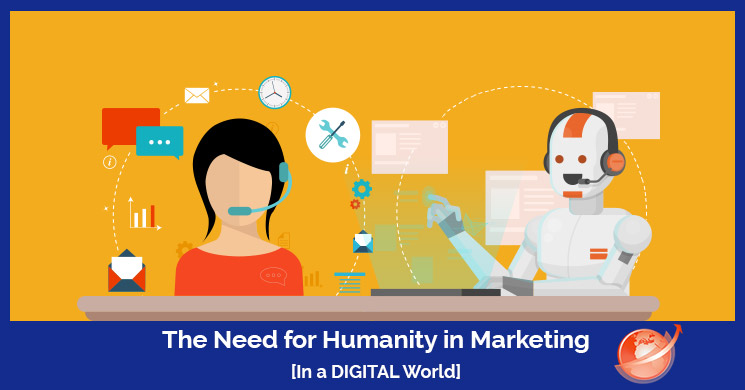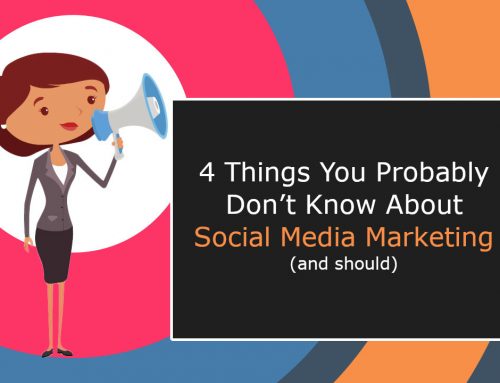Everywhere you turn these days, there’s a faster digital way to do something which used to require a human touch or help. Is this really the best way to ‘serve’ our clients? Read on.
The Problem
Recently we went to a restaurant which was hailed as the greatest thing where we live. It was dubbed thus because it was highly tech-savvy and ‘new’ – not because it was better. The customer must stand in line to make a drink order, then go to a touch screen (which many have touched before and has nothing nearby with which to wipe the board) and pay using a card terminal. There is no interaction with a person outside of the touchscreen except to pick up the buzzer which goes off when something is ready for the order. There was no table service, no care put into the food itself, and it was decidedly a sterile feeling altogether, which is the wrong ambiance for a restaurant. There again – perhaps we wanted more than the average person, many seemed happy to order food which for all purposes is take-out, but one step above.
It seems that people are accustomed to technology sneaking in and wrapping them in a cocoon of what appears to be safety and security, to make their lives easier, and more comfortable, but nobody really looks at what it is taking away from us as a society, and as individuals. True, the home assistant bot makes home shopping a little easier, or it can tell you what song is playing at the moment, but it doesn’t take the place of actual friendship, and neither does one’s social media feed or connections. People are becoming more distant from one another, and accepting of transactions which require zero contact with one another – but in doing so, it’s stealing part of our humanity.
People are social beings, and without those human connections – some of the very best parts of our social lives deteriorate to ruin. Warmth, compassion, kindness, the ability to be humble, unselfishness, gregariousness, and even chivalry – these are but a few of the virtues lost to humanity in favor of a technological world… and we’re all being led around like virtual cattle to the tune of those who designed the gadgetry to ensnare us. There are teams of people from all realms of the social sciences who are paid to find the best angle to market these gadgets to us using things like human psychology and tools which are proven to cause addiction.
The purpose of these things is to make life ‘easier’ or better in some way, but that’s on the surface and their marketing shtick, and it would be incredibly smart to learn to see through it before we’re entirely too comfortable with it – which may already be the case. (See Fitbits – wearable tech with way too much info – which recently made the news for giving away operational security positions in the US armed forces.) This only proves how well these marketing teams have done their job, to never let the public be afraid of what is largely unknown, and with a purpose also veiled. Facebook’s use of data is just one big example of what has been going on for a long time now.
The Solution
The solution isn’t to have more, higher technology – to remove more jobs, and more of our collective humanity – no, that will only broaden a divide which has become a chasm that is incapable of being bridged now. It’s too late, we’re now the product of a digital culture and there is no way to go back. Even if the world were to suffer a large scale EMP attack which wiped out all technology as we know it – people would rebuild with that technology in mind, because nobody wants to go back to the way things were before. That’s incredibly good brainwashing by the advertisers, who take grand advantage of humanity’s troubles with addiction.
The answer lies in bringing the human element into the transaction again, whether by hiring actual people to do jobs that robots and tech CAN do but shouldn’t. There are plenty of things that AI cannot do, like determine the mood of a customer on the line, or in a chat with customer service. AI gating (as with trying to reach customer service with ANY large company by calling) only serves to make angry the very people they’re supposed to be serving. Customer service becomes disservice, and disservice becomes the norm. Why is this okay?
There are plenty of ways where technology and humanity can work alongside one another using the talents of each. AI, after all, cannot possess a heart or soul to deal with people fairly or with any degree of compassion. Kindness it can fake, friendliness and helpfulness as well, but it can never be human – and the trick now for those marketing cutting-edge AI is to instill more ‘human-like’ things into AI to mimic emotion and to feel more human, but we believe that nothing beats the human touch within customer service and we reference some compelling data to back that up.
Customer Relationships
Technology can be used to create more positive experiences, but many companies fall short in this regard.
How can technology be used effectively to bring us closer to our customers rather than further away?
Nobody wants to be treated like a number, or data – the more someone feels valued and gets a personal experience instead of a canned response, the more that person will advertise for you to others. Having a real experience also lends a feeling of value, care, and sets you apart from EVERYONE else out there who are choosing a cheaper, faster, and less human option.
“There is NO substitute for actual help, from actual people who care.”
If time is a problem and you cannot afford the staff it takes to do this properly, there are some options which blend AI and tech in a way that feels less intrusive, less sterile and cold, and more appropriate in today’s world.
Try using things like a Facebook Chat Bot – these are offered from Facebook and also 3rd party sites which can help people take instant advantage of the information you have available, even when you’re not at work. People globally are operating in entirely different time zones, so being able to be there 24/7/365 no matter where someone lives – is a real boon and actually DOES offer value to the customer.






![Do you know BERT? [Google SEO]](https://magiwebsa.com/wp-content/uploads/2019/11/podvid-epi35-cover-500x383.jpg)